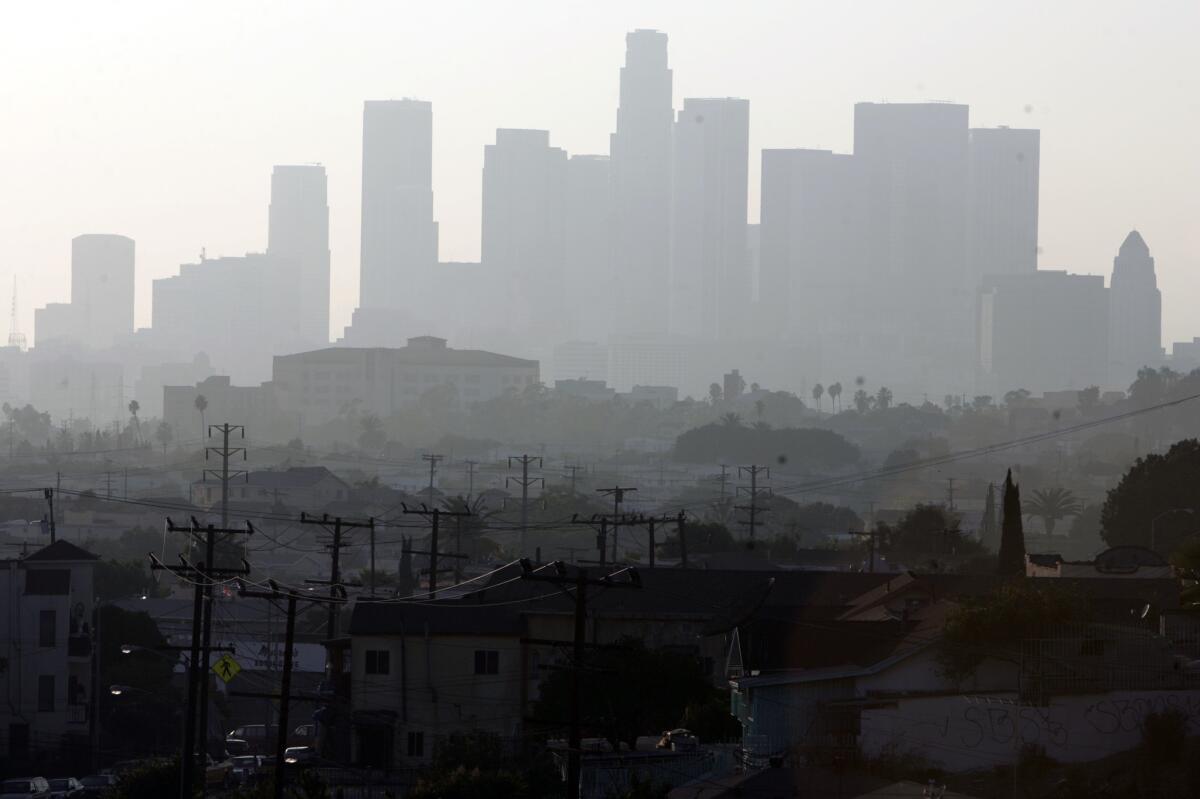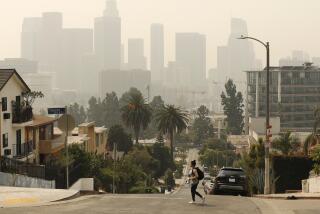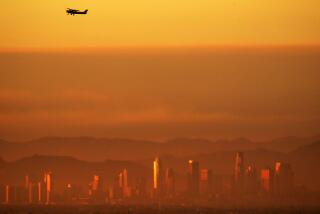EPA science advisors urge stricter limits on lung-damaging ozone

- Share via
A committee of scientific advisors has urged the U.S. Environmental Protection Agency to adopt a tougher federal standard for ozone, saying current limits on the lung-damaging pollutant fail to protect public health.
A letter sent Thursday by the EPA-chartered Clean Air Scientific Advisory Committee recommends strengthening the federal standard for ozone, the main ingredient of smog, to below 70 parts per billion and as low as 60 ppb. That range that is significantly stricter than the current limit of 75 ppb, set in 2008 during the George W. Bush administration.
The independent panel of experts says there is “ample scientific evidence” that ozone is harmful at lower levels than previously thought. It cites studies showing that even ozone-polluted air that meets current standards, at 72 ppb, can cause adverse health effects for young, healthy adults after a little more than 6½ hours of exposure.
Tightening the ozone standard to 70 parts per billion would be an improvement,the letter says, but even at that level, “there is substantial scientific evidence of adverse effects ... including decrease in lung function, increase in respiratory symptoms, and increase in airway inflammation.”
A limit of 70 ppb would still pose a risk to children, people with asthma and the elderly and may not meet the Clean Air Act’s requirement to protect public health “with an adequate margin of safety,” the letter warns.
Ozone, a corrosive gas that forms when pollutants from vehicle tailpipes, power plants and factories bake in sunlight, inflames the lungs and can damage the airways and aggravate asthma and other respiratory illnesses.
In 2010, the EPA estimated that setting the ozone standard at 60 ppb would avoid 4,000 to 12,000 premature deaths, prevent 21,000 hospital and emergency room visits and cut missed work and school days by 2.5 million. Those health benefits would drop significantly if the standard were set at 70 ppb.
The stricter smog limit endorsed by the committee would bring cleaner air to millions in the country but billions in added costs to industry. Any proposal to tighten the ozone standard is likely to face fierce opposition from business groups against more stringent rules on emissions.
In 2011, President Obama went against the recommendations of the EPA and its scientific advisors and halted a proposal to lower the nation’s ozone standard to a similar range, from 60 ppb to 70 ppb.
Frank O’Donnell, president of Clean Air Watch, wrote in a blog post that the EPA’s management “has seemed skittish about this key public health issue” ever since.
“It’s going to be tough for EPA to sweep this issue under the rug in light of the scientists’ letter,” O’Donnell wrote.
EPA spokesman George Hull said in an email that the agency “will respond appropriately” to the committee’s recommendations.
The science committee’s recommendations are part of a review the EPA is required to complete every five years under the Clean Air Act. The EPA is under a court-ordered deadline to issue a a new ozone proposal by Dec. 14.
For more environment news, follow me @tonybarboza







